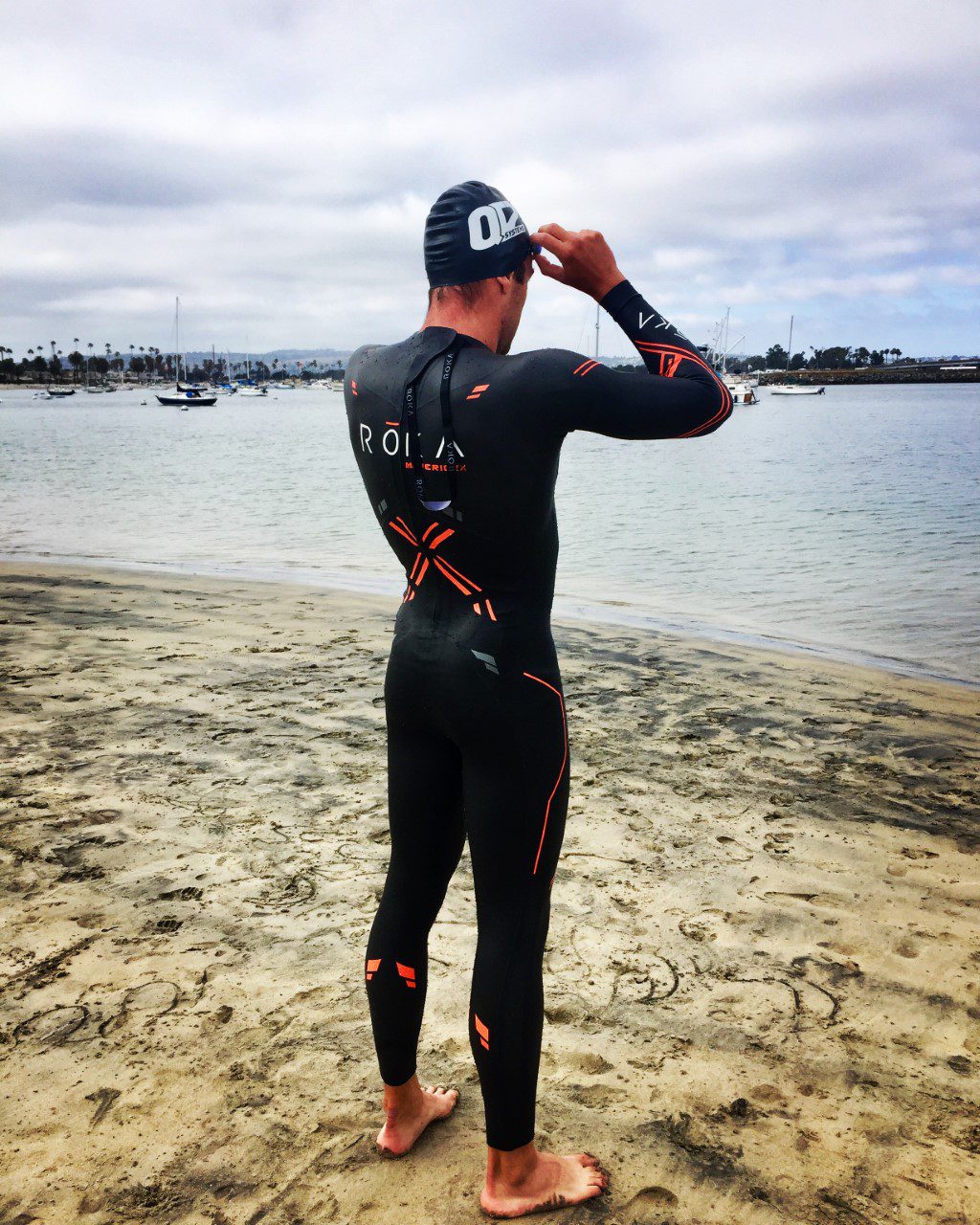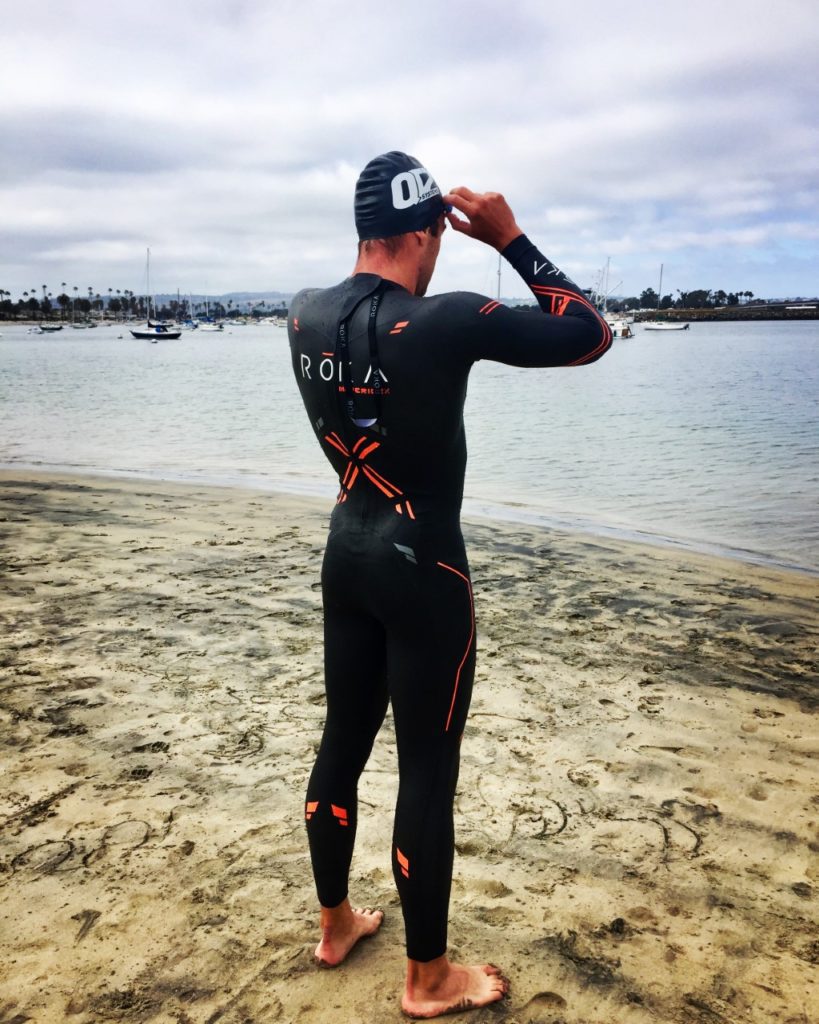Coach Paul Duncan: Tips for a one-hour Ironman swim
If the one-hour swim is a milestone you've set for yourself, here are some tips to help you get there.


A quick guide to being on your way to a sub-one hour Ironman swim.
If you’ve completed a few full distance triathlons before, you may be familiar with the one hour Ironman swim benchmark. This benchmark is a milestone that’s hard to obtain for most, but it is doable if you follow the right program and commit to your swimming training in a focused manner.
I sat down with QT2 Systems pro triathlete and coach, Nick Granet (@ngranet on Instagram) and we came up with some basic points to cover to help you get ready for your best Ironman swim and on your way to sub-one hour.
Swim enough mileage:
At a minimum, the athlete should be swimming three times, or around 12k meters per week. This puts the athlete in a position to swim according to their speed potential based on shorter tests like a 400 or 800 best effort. Critical volume of the swim is equal to 9/3 of 2.4 mile or 12,660 yards. (Swim = 2.4 miles = 4220 yds x 9/3 = 12,660yds.) The goal with critical volume is to build into it and meet or exceed it for multiple weeks prior to or during your last build before you taper . With that said, start your build at low intensity (85% of threshold heart rate) and only add intensity once you reach the critical volume itself.
Transfer your pool swimming ability to open water:
As most of you know, open water swimming is completely different from swimming in a lap pool. The difference is augmented once you crowd the water with multiple athletes all fighting for positions. Why are you a decent swimmer in the pool, but cant match your potential when it comes to open water? There could be a couple reasons, but I will highlight some of the ones I see most often in athletes.
- Slow turnover: Pool swimming is all about gliding and being as efficient as possible. In the open water, gliding tends to promote a slow turnover, resulting in a weak stroke follow through. Once you put a wetsuit on, the shoulder restriction affects your turnover even more. There are a couple things that can cure this. One of my favourite drills is band swimming. It promotes a fast and strong turnover as well as proper hip alignment. Practice this drill a few times, starting at a comfortable distance and increasing that as you get better.
- Weak follow-through and poor catch: If you are constantly feeling like you aren’t grabbing any water this one is for you. In open water, the follow-through is the most important aspect of forward momentum. Why? because when it gets crowded and you can’t catch clean water in front, you must rely on your follow through strength to keep up. My favourite tools to use when working on that are, swim paddles and a buoy. Paddles help you build strength in the water as well a promote a good clean catch and strong follow-through. You can feel every aspect of your stroke with paddles and thus can see where you lack in strength.
- Stress/anxiety: This is a big one — time and time again I will hear athletes say that it took them a long time to get into a comfortable pace during their swim. A few things that can fix this are a good swim warm up and wetsuit/open water experiment. Take the time to get to know the water before a race and see the courts layout. Race morning, always get a least 15 minutes of warm up time in the water. You will see yourself settled and relaxed before the start. Make sure you get a couple swims out in open water and practice going at your race pace. Also test out your equipment and get familiar with it. Get a feeling for what to expect come race day. Please don’t buy a new wetsuit the day before the race!
Sample workout to gauge Ironman swim fitness:
- 400 or 800 yard time trials — This will indicate your speed in the water at threshold. This is a good one to repeat multiple times in the year as you can gauge your progression easily. Entering this value into the QT2 Systems Triathlon Calculator along with your weekly swim volume will give you a good ball park of what you might be able to swim for your race. The calculator is available at www.qt2systems.com/triathlon-c
alculator/
- Monster set- 45 X 100 on a send-off of your 400 time trial pace + 10 seconds. The average time you hit per 100 will equal your Ironman time in a wetsuit.
The purpose of this writing is to help you understand what goes into the preparation for a sub one hour Ironman swim. I hope that through some of my points, you can gain some knowledge about what it takes to complete this feat. It’s all about consistency and long term progression when in the water. If you work at something consistently enough, you will see the reward. There is no glory without sacrifice.
Questions?
Contact Paul directly.
Instagram: @paulduncanjr
About the author:
Paul is a United States Army Veteran, USAT Certified Coach, QT2 Systems Level 1 Coach, and OutRival Racing Level 3 coach.
Paul also competes in triathlon and running events in his spare time.
- 70.3 PR (4:24:26)
140.6 PR – (9:51:53) - Half Marathon – (1:24:21)
- Marathon – (2:57:27)

